Zhongjun Ni
Department of Science and Technology, Linköping University, Campus Norrköping, Sweden
Predicting Pedestrian Crossing Behavior in Germany and Japan: Insights into Model Transferability
Dec 04, 2024



Abstract:Predicting pedestrian crossing behavior is important for intelligent traffic systems to avoid pedestrian-vehicle collisions. Most existing pedestrian crossing behavior models are trained and evaluated on datasets collected from a single country, overlooking differences between countries. To address this gap, we compared pedestrian road-crossing behavior at unsignalized crossings in Germany and Japan. We presented four types of machine learning models to predict gap selection behavior, zebra crossing usage, and their trajectories using simulator data collected from both countries. When comparing the differences between countries, pedestrians from the study conducted in Japan are more cautious, selecting larger gaps compared to those in Germany. We evaluate and analyze model transferability. Our results show that neural networks outperform other machine learning models in predicting gap selection and zebra crossing usage, while random forest models perform best on trajectory prediction tasks, demonstrating strong performance and transferability. We develop a transferable model using an unsupervised clustering method, which improves prediction accuracy for gap selection and trajectory prediction. These findings provide a deeper understanding of pedestrian crossing behaviors in different countries and offer valuable insights into model transferability.
Predicting and Analyzing Pedestrian Crossing Behavior at Unsignalized Crossings
Apr 15, 2024Abstract:Understanding and predicting pedestrian crossing behavior is essential for enhancing automated driving and improving driving safety. Predicting gap selection behavior and the use of zebra crossing enables driving systems to proactively respond and prevent potential conflicts. This task is particularly challenging at unsignalized crossings due to the ambiguous right of way, requiring pedestrians to constantly interact with vehicles and other pedestrians. This study addresses these challenges by utilizing simulator data to investigate scenarios involving multiple vehicles and pedestrians. We propose and evaluate machine learning models to predict gap selection in non-zebra scenarios and zebra crossing usage in zebra scenarios. We investigate and discuss how pedestrians' behaviors are influenced by various factors, including pedestrian waiting time, walking speed, the number of unused gaps, the largest missed gap, and the influence of other pedestrians. This research contributes to the evolution of intelligent vehicles by providing predictive models and valuable insights into pedestrian crossing behavior.
Edge-based Parametric Digital Twins for Intelligent Building Indoor Climate Modeling
Mar 07, 2024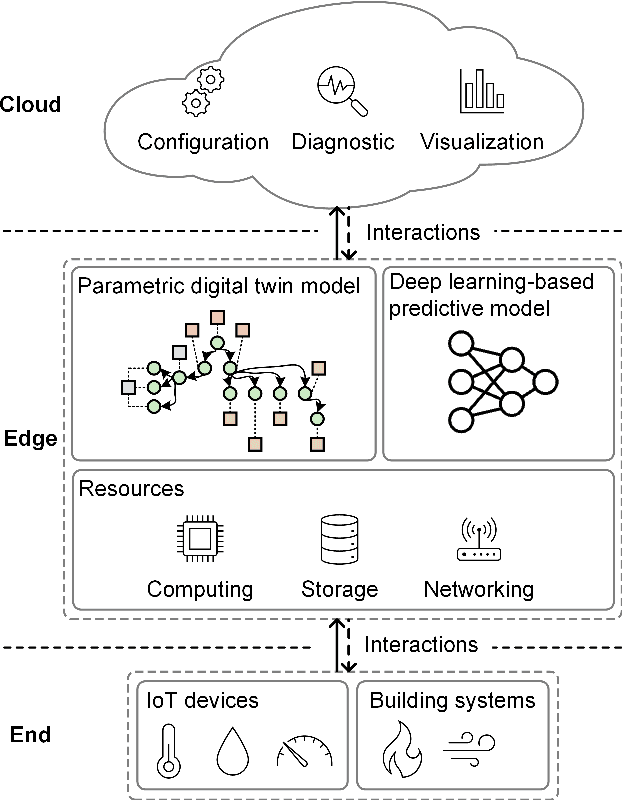
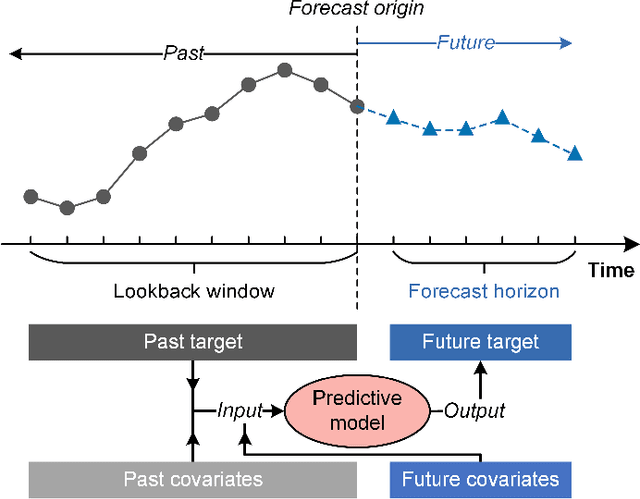

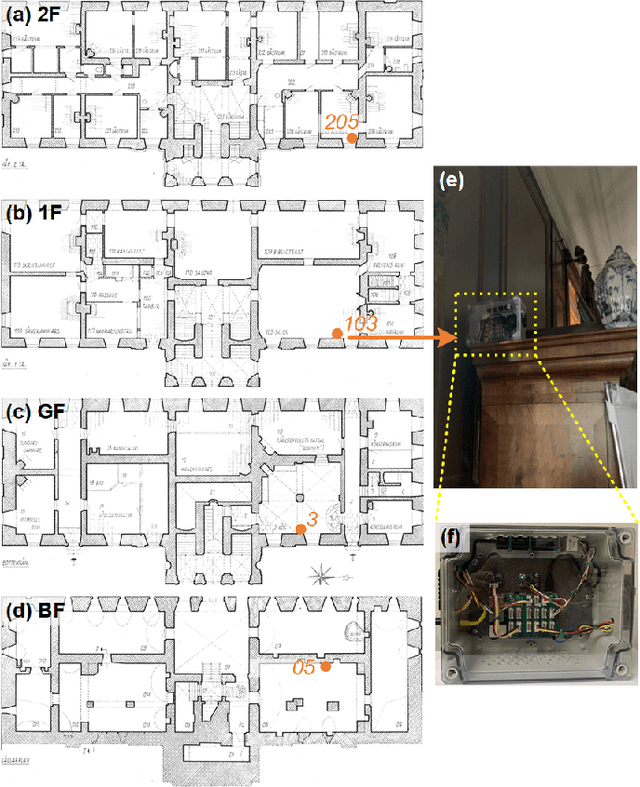
Abstract:Digital transformation in the built environment generates vast data for developing data-driven models to optimize building operations. This study presents an integrated solution utilizing edge computing, digital twins, and deep learning to enhance the understanding of climate in buildings. Parametric digital twins, created using an ontology, ensure consistent data representation across diverse service systems equipped by different buildings. Based on created digital twins and collected data, deep learning methods are employed to develop predictive models for identifying patterns in indoor climate and providing insights. Both the parametric digital twin and deep learning models are deployed on edge for low latency and privacy compliance. As a demonstration, a case study was conducted in a historic building in \"Osterg\"otland, Sweden, to compare the performance of five deep learning architectures. The results indicate that the time-series dense encoder model exhibited strong competitiveness in performing multi-horizon forecasts of indoor temperature and relative humidity with low computational costs.
Leveraging Deep Learning and Digital Twins to Improve Energy Performance of Buildings
May 16, 2023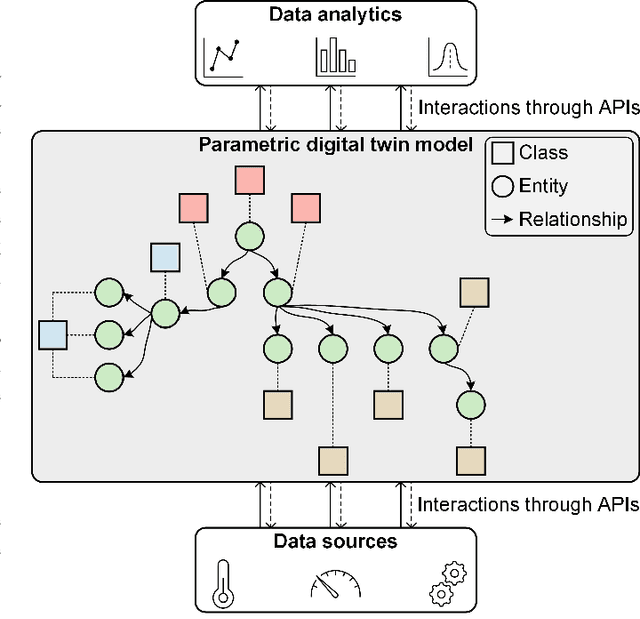

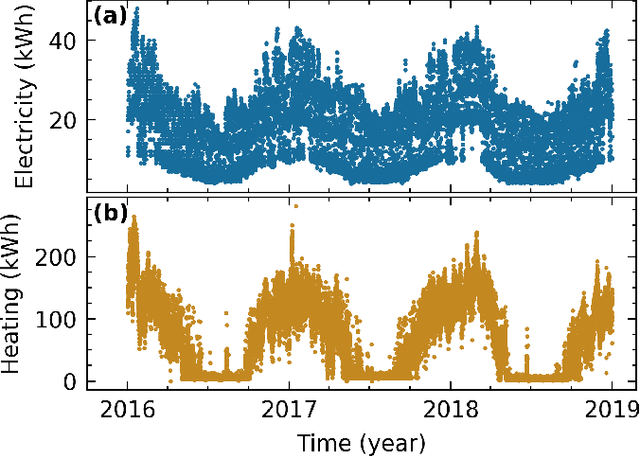
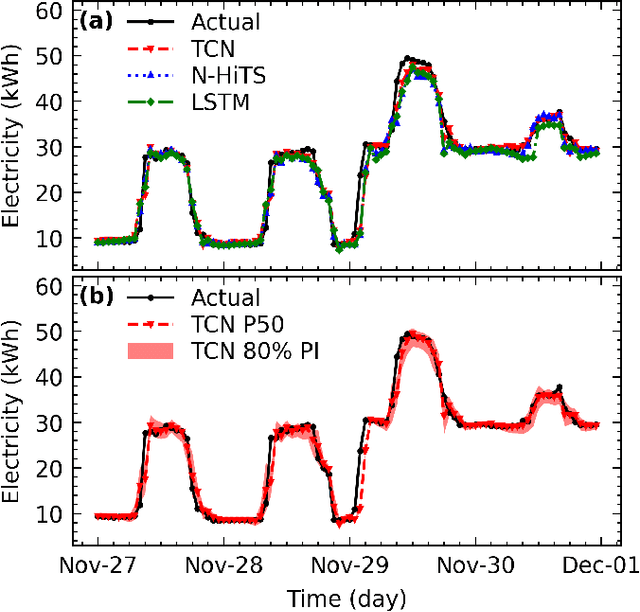
Abstract:Digital transformation in buildings accumulates massive operational data, which calls for smart solutions to utilize these data to improve energy performance. This study has proposed a solution, namely Deep Energy Twin, for integrating deep learning and digital twins to better understand building energy use and identify the potential for improving energy efficiency. Ontology was adopted to create parametric digital twins to provide consistency of data format across different systems in a building. Based on created digital twins and collected data, deep learning methods were used for performing data analytics to identify patterns and provide insights for energy optimization. As a demonstration, a case study was conducted in a public historic building in Norrk\"oping, Sweden, to compare the performance of state-of-the-art deep learning architectures in building energy forecasting.
Cross or Wait? Predicting Pedestrian Interaction Outcomes at Unsignalized Crossings
Apr 17, 2023



Abstract:Predicting pedestrian behavior when interacting with vehicles is one of the most critical challenges in the field of automated driving. Pedestrian crossing behavior is influenced by various interaction factors, including time to arrival, pedestrian waiting time, the presence of zebra crossing, and the properties and personality traits of both pedestrians and drivers. However, these factors have not been fully explored for use in predicting interaction outcomes. In this paper, we use machine learning to predict pedestrian crossing behavior including pedestrian crossing decision, crossing initiation time (CIT), and crossing duration (CD) when interacting with vehicles at unsignalized crossings. Distributed simulator data are utilized for predicting and analyzing the interaction factors. Compared with the logistic regression baseline model, our proposed neural network model improves the prediction accuracy and F1 score by 4.46% and 3.23%, respectively. Our model also reduces the root mean squared error (RMSE) for CIT and CD by 21.56% and 30.14% compared with the linear regression model. Additionally, we have analyzed the importance of interaction factors, and present the results of models using fewer factors. This provides information for model selection in different scenarios with limited input features.
 Add to Chrome
Add to Chrome Add to Firefox
Add to Firefox Add to Edge
Add to Edge